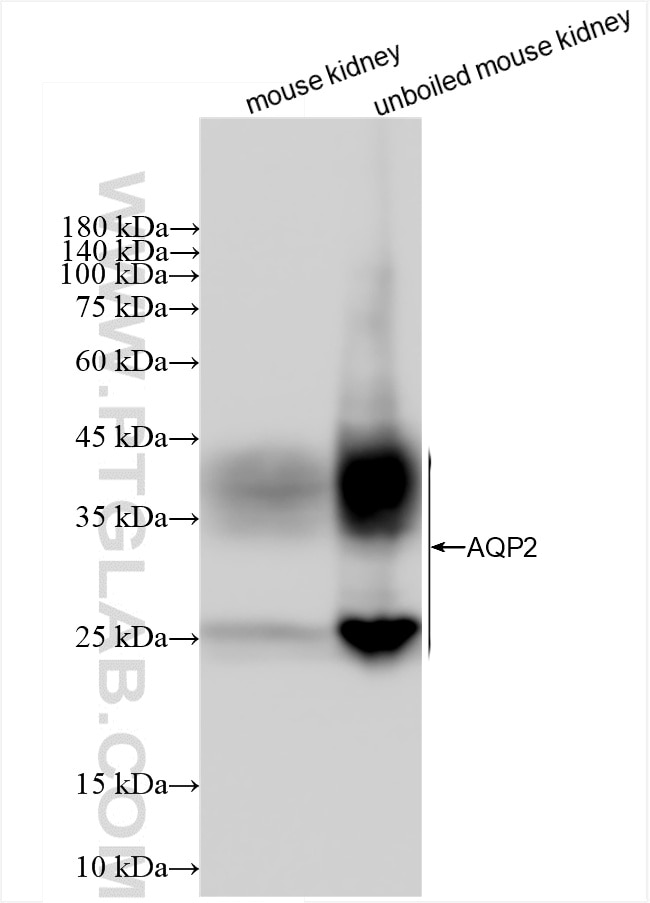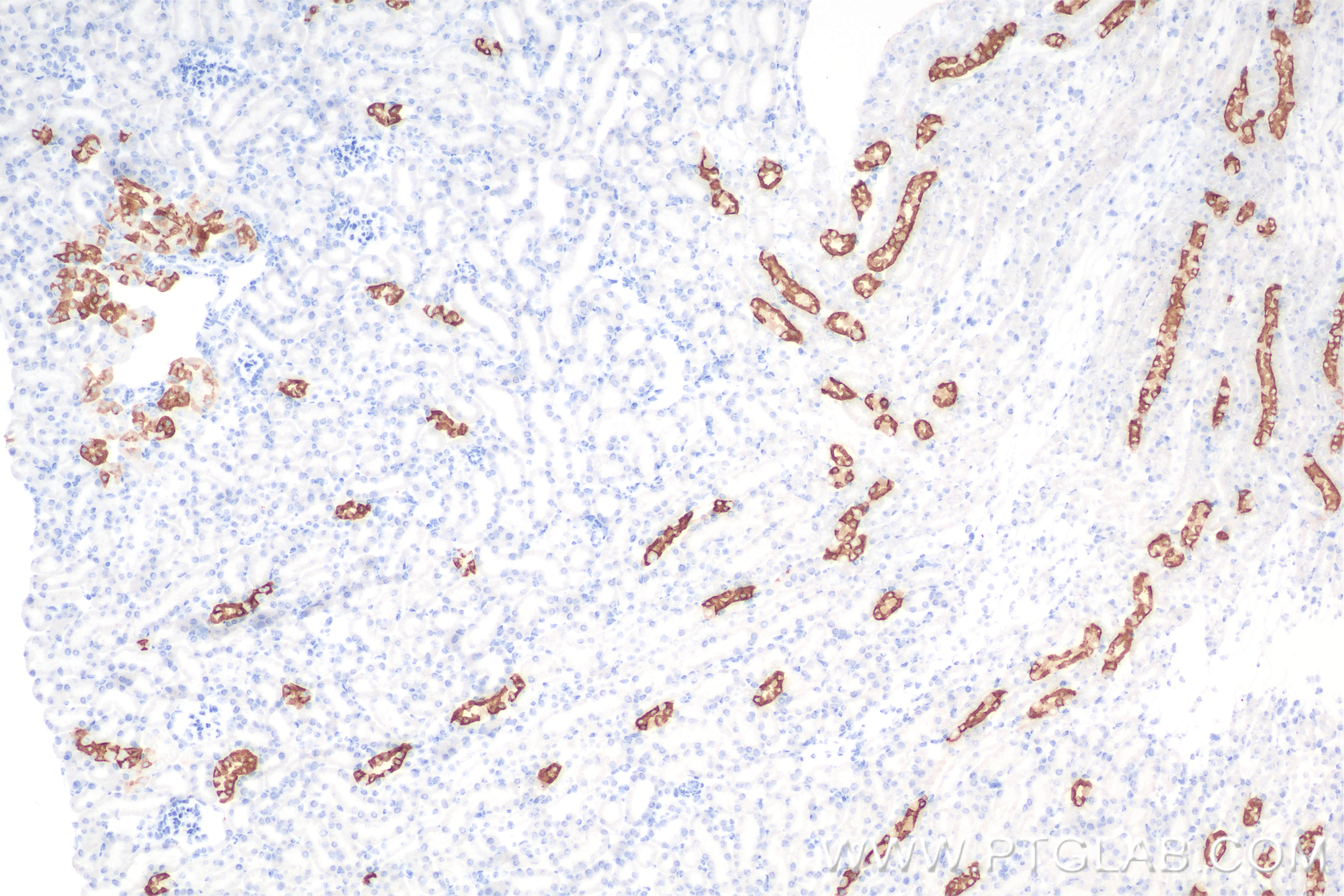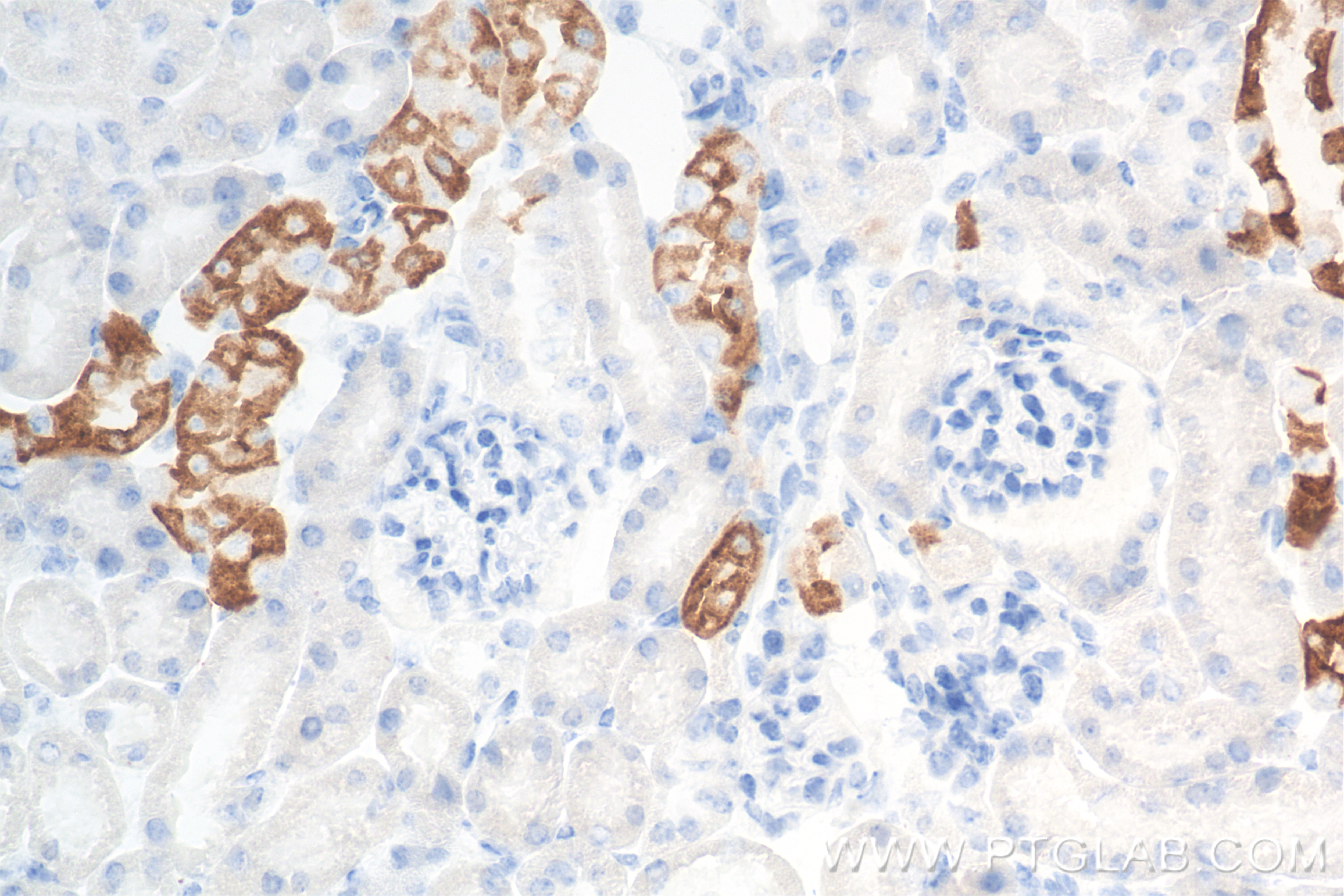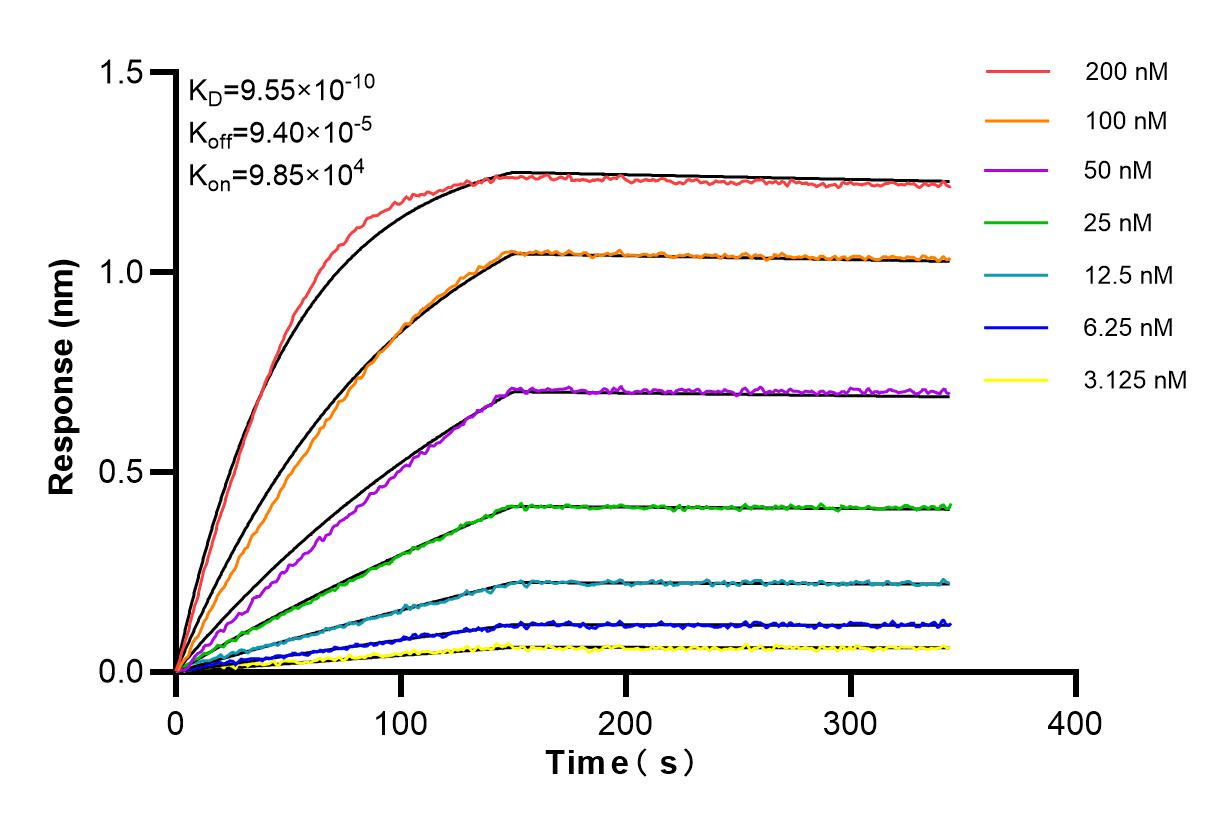Tested Applications
| Positive WB detected in | mouse kidney tissue, unboiled mouse kidney tissue |
| Positive IHC detected in | mouse kidney tissue Note: suggested antigen retrieval with TE buffer pH 9.0; (*) Alternatively, antigen retrieval may be performed with citrate buffer pH 6.0 |
Recommended dilution
| Application | Dilution |
|---|---|
| Western Blot (WB) | WB : 1:20000-1:100000 |
| Immunohistochemistry (IHC) | IHC : 1:5000-1:20000 |
| It is recommended that this reagent should be titrated in each testing system to obtain optimal results. | |
| Sample-dependent, Check data in validation data gallery. | |
Product Information
85402-1-RR targets AQP2 in WB, IHC, ELISA applications and shows reactivity with human, mouse samples.
| Tested Reactivity | human, mouse |
| Host / Isotype | Rabbit / IgG |
| Class | Recombinant |
| Type | Antibody |
| Immunogen |
CatNo: Ag29931 Product name: Recombinant human AQP2 protein Source: e coli.-derived, PGEX-4T Tag: GST Domain: 207-271 aa of NM_000486 Sequence: GPLVGAILGSLLYNYVLFPPAKSLSERLAVLKGLEPDTDWEEREVRRRQSVELHSPQSLPRGTKA Predict reactive species |
| Full Name | aquaporin 2 (collecting duct) |
| Calculated Molecular Weight | 29 kDa |
| Observed Molecular Weight | 28-29 kDa, 35-38 kDa |
| GenBank Accession Number | NM_000486 |
| Gene Symbol | AQP2 |
| Gene ID (NCBI) | 359 |
| Conjugate | Unconjugated |
| Form | Liquid |
| Purification Method | Protein A purification |
| UNIPROT ID | P41181 |
| Storage Buffer | PBS with 0.02% sodium azide and 50% glycerol, pH 7.3. |
| Storage Conditions | Store at -20°C. Stable for one year after shipment. Aliquoting is unnecessary for -20oC storage. 20ul sizes contain 0.1% BSA. |
Background Information
AQP2 (Aquaporin2) is a water channel protein that is widely distributed among mammalian tissues and plays a major role in water homeostasis. AQP2 is mainly found in the apical cell membranes of the kidney's collecting duct cells and is critical for urinary concentration. AQP2 can be glycosylated and this antibody recognizes the 28-29 kDa non-glycosylated as well as the 35-40 kDa glycosylated forms of AQP2.
Protocols
| Product Specific Protocols | |
|---|---|
| IHC protocol for AQP2 antibody 85402-1-RR | Download protocol |
| WB protocol for AQP2 antibody 85402-1-RR | Download protocol |
| Standard Protocols | |
|---|---|
| Click here to view our Standard Protocols |










